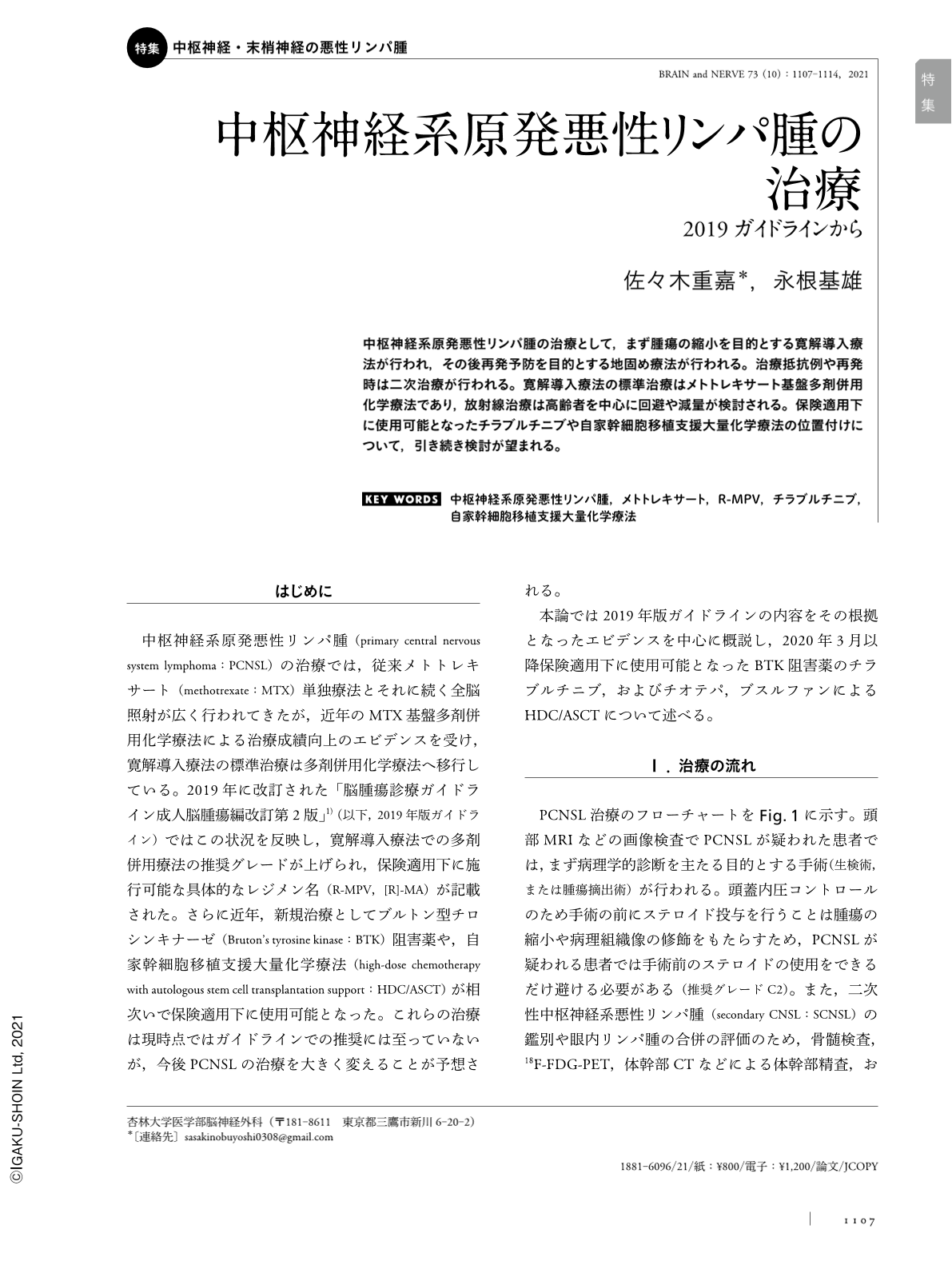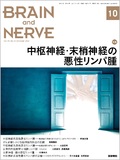Japanese
English
- 有料閲覧
- Abstract 文献概要
- 1ページ目 Look Inside
- 参考文献 Reference
中枢神経系原発悪性リンパ腫の治療として,まず腫瘍の縮小を目的とする寛解導入療法が行われ,その後再発予防を目的とする地固め療法が行われる。治療抵抗例や再発時は二次治療が行われる。寛解導入療法の標準治療はメトトレキサート基盤多剤併用化学療法であり,放射線治療は高齢者を中心に回避や減量が検討される。保険適用下に使用可能となったチラブルチニブや自家幹細胞移植支援大量化学療法の位置付けについて,引き続き検討が望まれる。
Abstract
Management of primary central nervous system lymphoma (PCNSL) includes induction and consolidation therapies in newly diagnosed patients, as well as second-line therapy in relapsed or refractory patients. The current standard-of-care induction therapy involves methotrexate (MTX)-based multi-agent immunochemotherapy with rituximab, methotrexate, procarbazine, and vincristine. Deferral or dose reduction of radiation therapy is considered in consolidation therapy, especially in elderly patients who carry a high risk of radiation-induced delayed neurotoxicity. Since elderly patients comprise the main population of PCNSL, minimally toxic treatments that are effective and feasible for them are strongly needed. For second-line therapy, rechallenge using MTX-based chemotherapy (in patients with a prior durable response to MTX-based chemotherapy) or radiation therapy is considered. Bruton's tyrosine kinase inhibitor tirabrutinib (for relapsed and refractory PCNSL) and high-dose chemotherapy with autologous stem cell transplantation support using thiotepa and busulfan (BuTT) were approved by the Japanese Ministry of Health and Welfare in March 2020 and has recently become available for clinical practice. While these novel treatments seem promising, the optimal use of these treatments along with the standard-of-care therapy of PCNSL should be defined and investigated in clinical trials.

Copyright © 2021, Igaku-Shoin Ltd. All rights reserved.


